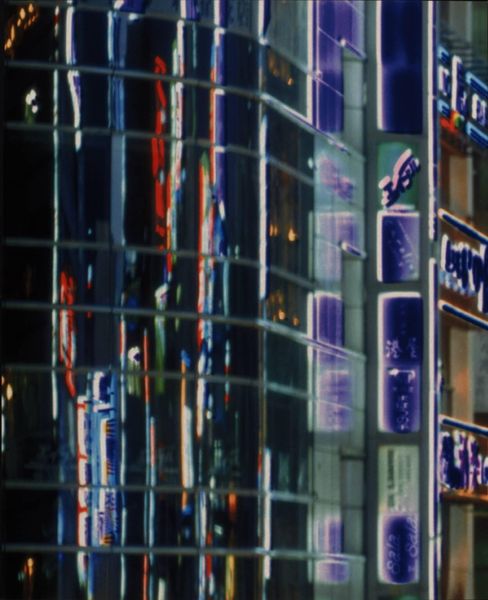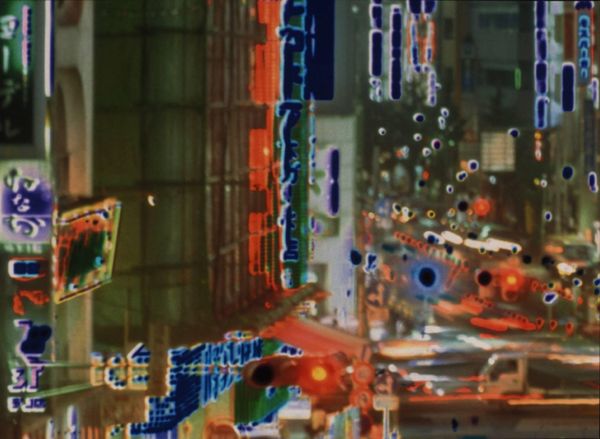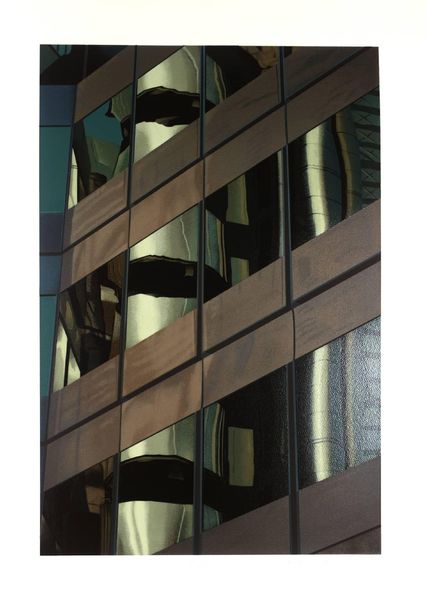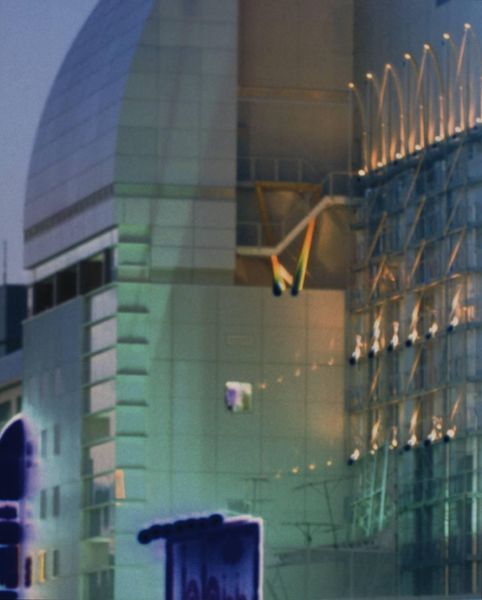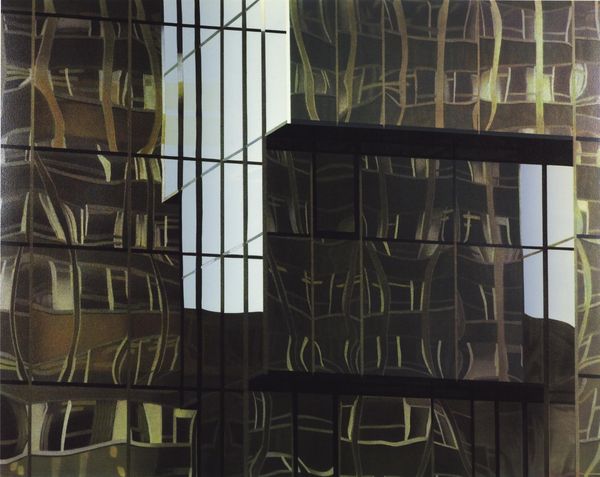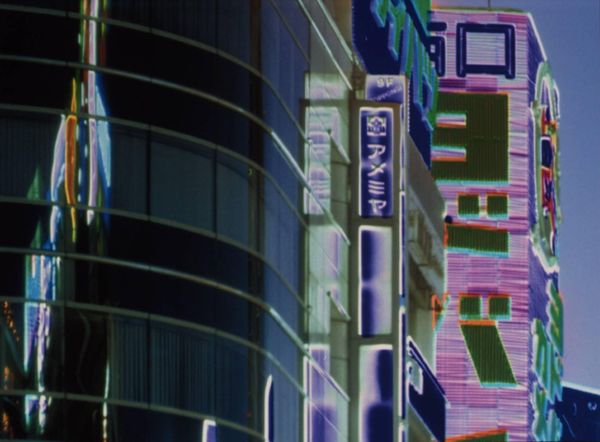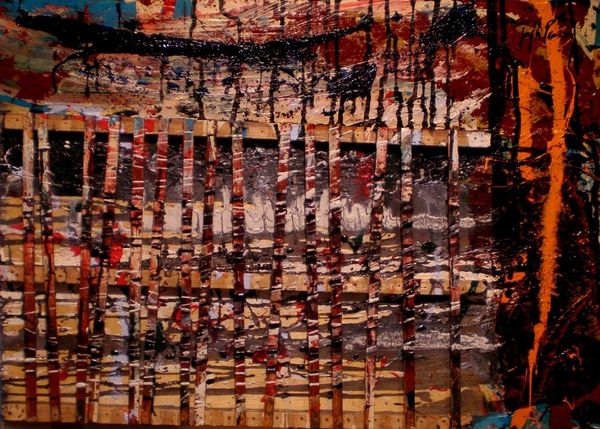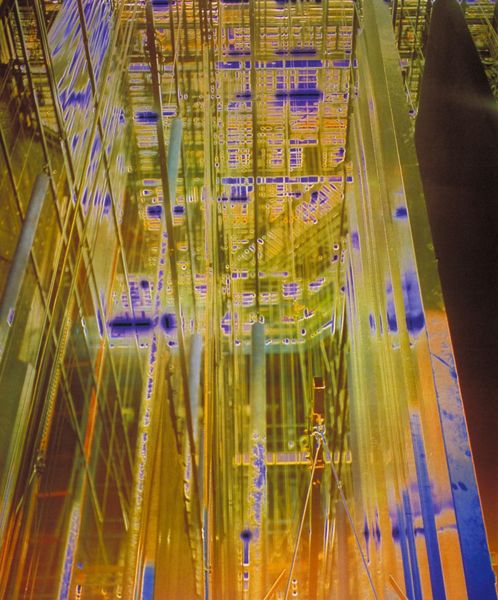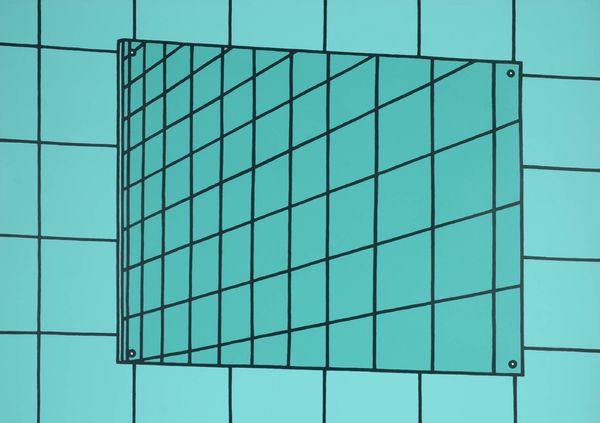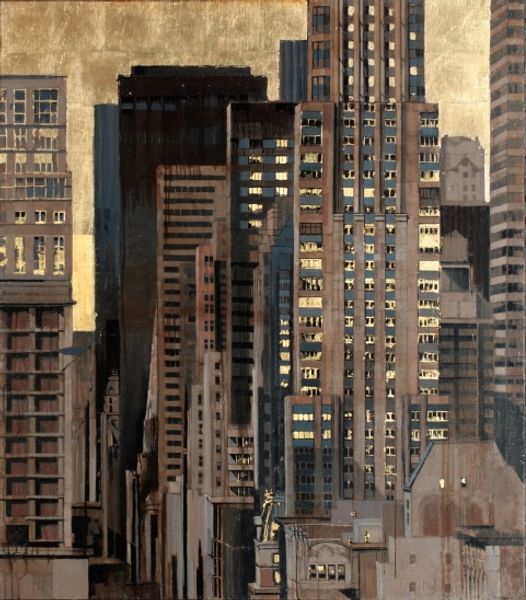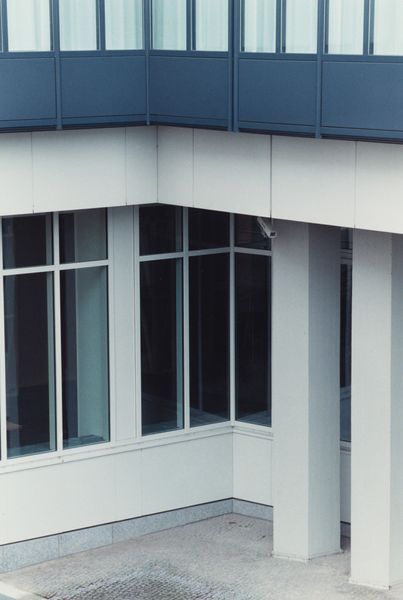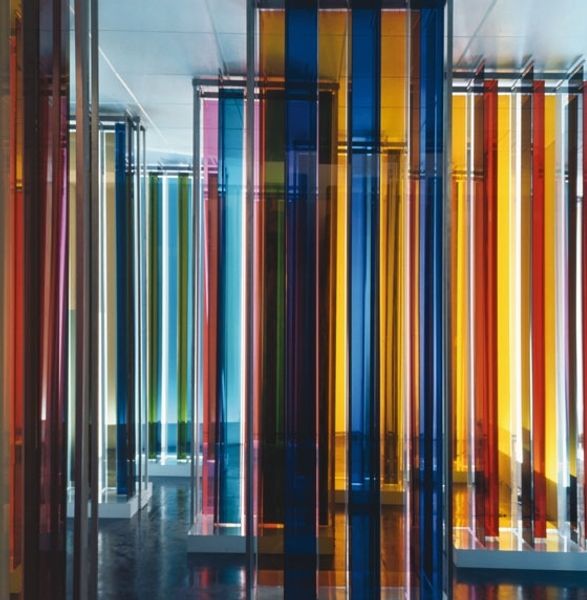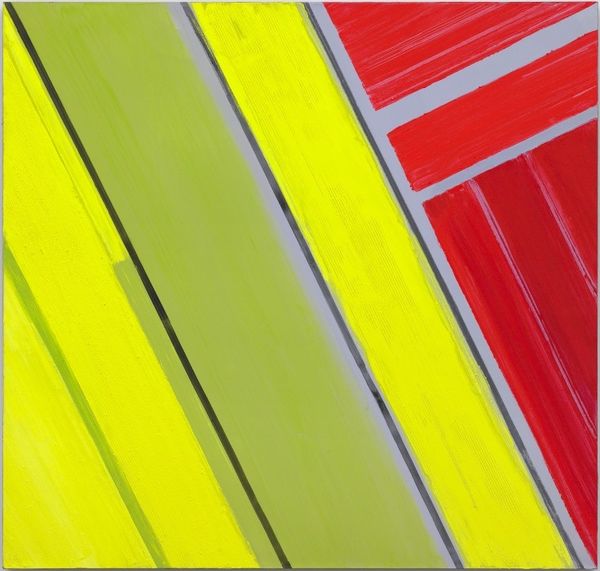
Dimensions: unconfirmed: 800 x 650 mm
Copyright: © Catherine Yass | CC-BY-NC-ND 4.0 DEED, Photo: Tate
Curator: Catherine Yass' "Northwest C6" offers us a somewhat disorienting view of urban architecture. The dimensions are approximately 800 by 650 mm. What are your initial thoughts? Editor: It gives me the sensation of being an outsider looking in, a voyeuristic unease amplified by the blurred effect. It feels disconnected. Curator: The blurring is key, isn't it? It fractures the image, rendering the grid-like facade almost painterly. Notice how the light becomes pure form, divorced from its source. Editor: Yes, and consider what is being shown: people in an artificially lit commercial space at night. It speaks to the alienation of contemporary urban life, a manufactured reality. Curator: Perhaps. Or perhaps the subject matter is secondary to the formal investigation of light, color, and the photographic medium itself. The composition creates its own logic. Editor: I'd argue the formal elements serve to heighten the emotional impact, the sense of detachment that so many feel within the urban landscape. The location is not neutral. Curator: A fascinating divergence. I'll be interested to reflect further on how Yass uses her lens to both reveal and abstract the everyday. Editor: Agreed. And I'll be considering the implications of representing people in such a fragmented and isolating way.
Comments
Join the conversation
Join millions of artists and users on Artera today and experience the ultimate creative platform.
tate 8 months ago
⋮
Invisible City 2001 is a series of six digital prints based on an image from Yass's work of the same title created in 1998. This earlier work comprises four photographic transparencies displayed in light boxes and four short videos. The photographs were taken in Tokyo and depict street scenes taken from the same viewpoint looking 'north', 'north-west', 'north north-west' and 'south'. The digital prints are all component parts of the image subtitled 'north-west' in the original work. Their own subtitles, consisting of the words 'north-west' together with a letter and number reference, such as D6 or D4, suggest map co-ordinates. However these 'co-ordinates' do not follow a logical structure related to the grid they apparently refer to and seem random in their selection and allocation. The digital prints are similar in size to the transparency from which they are derived. Thus scaled-up, these segments of the original represent a greater degree of abstraction. Some, such as Northwest F6, have virtually no recognisable elements and have become compositions in vivid colour. Others, for example Northwest F3, clearly depict a section of a tall modern building illuminated romantically in blue and pink evening light. Light and its manipulated effects are important themes in Yass's work. At an early point in her career she discovered the possibility of reversing the positive and negative aspects of photographic film through an error. She has subsequently experimented and perfected a technique which has become her signature. Each image is produced by taking two photographs, several seconds apart, and then superimposing them. One is positive, the other negative, resulting in the light or white areas of the positive being filled in by the colour produced by the negative. Yass usually uses an intense blue, similar to the 'Chartres blue' of medieval stained glass windows, heightening the atmospheric and sometimes even transcendental effects of her image. In Invisible City the negative image is slightly smaller than the positive image, resulting in white halos around the 'negative' blue areas. The short time gap between photographs and the movement of the traffic in the busy street have contributed to the blur around patches of neon light. The buildings themselves, behind the luminous neons, provide ghostly support structures for the artist's study of city lights. Yass derived the title Invisible City from Italo Calvino's (1923-85) book of the same name (published 1972). The book is a sequences of essays describing fantastical imaginary cities fictionally recounted by Marco Polo (1254-1324) to Kublai Kahn (1215-94). Calvino's preface describes the idealising allure of the imaginary, unknown foreign city which is inevitably destroyed by the corrupting reality of conquest and attendant knowledge. Yass's images coupled with Calvino's title evoke aspects of the city which are present but which go unnoticed. Through the virtuosity of her technical intervention, she has transformed a constantly moving, anonymous and physically alienating modern environment into a space for fantasy, provided by colour and light. The portfolio Invisible City 2001 was printed and proofed at Chromograph in Woverhampton, England and published by Alan Cristea Gallery, London in an edition of forty plus ten artist's proofs. This is number twenty-nine in the edition. The images may be exhibited in any order. Further reading:Catherine Yass: Invisible City, exhibition brochure, Alan Cristea Gallery, London 2001, reproduced (colour) [pp.2-4 and 6-8]Parveen Adams, Greg Hilty, Catherine Yass: Works 1994-2000, London 2000, pp.5-6, 57 and 101 Elizabeth ManchesterMarch 2002
